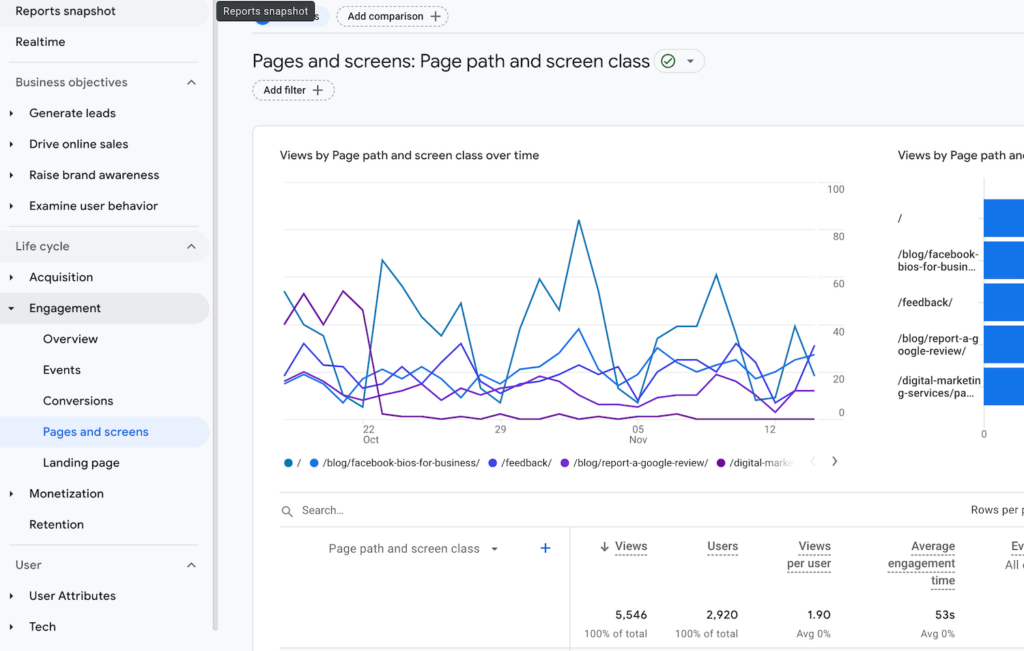Deep Dive into the 'Secondary Dimension' in Google Analytics: Everything You Ought To Understand
Wiki Article
Translating the Value of Additional Measurement in Google Analytics: Everything About Its Importance and Impact
In the realm of electronic analytics, the utilization of second measurements within Google Analytics serves as an essential device for discerning deeper layers of data understandings. The relevance of additional dimensions lies in their capacity to provide a nuanced sight of individual behavior and communication with a site or system.Comprehending Secondary Dimensions in Google Analytics
The understanding of second dimensions in Google Analytics is important for gaining much deeper insights right into individual behavior and website efficiency. While primary dimensions give basic data points such as website traffic sources and web page sights, secondary dimensions permit a much more nuanced evaluation by supplying additional context to these main metrics. By incorporating additional measurements, users can sector and filter their data to discover patterns and patterns that might not be right away apparent.
Unveiling the Benefits of Second Dimensions
Structure upon the fundamental understanding of additional dimensions in Google Analytics, checking out the advantages they provide exposes invaluable understandings for improving information analysis and decision-making. By incorporating secondary measurements, users can dive deeper right into their data, gaining a much more comprehensive sight of customer behavior, material efficiency, and other vital metrics. One of the key advantages is the capability to sector data, enabling a more granular analysis of different dimensions such as web traffic resources, tools, demographics, and more. This segmentation allows customers to recognize patterns, patterns, and connections that may not appear when considering information in accumulation.Additionally, additional dimensions offer context to main data, offering additional layers of information that can aid in recognizing customer communications and choices. This boosted understanding can lead critical decision-making, leading to more targeted marketing projects, website optimizations, and total better efficiency. Fundamentally, additional dimensions act as a powerful device for opening much deeper understandings and taking full advantage of the utility of Google Analytics for companies and web site owners.
Leveraging Second Dimensions for Enhanced Insights
By using the power of additional dimensions in Google Analytics, businesses can reveal deeper insights that drive notified decision-making and calculated optimization efforts. Leveraging second measurements permits organizations to dig past surface-level information and acquire a more detailed understanding of user actions, target market demographics, website traffic resources, and internet site performance. For example, by integrating key measurements like traffic sources with second measurements such as geographical location or device group, companies can identify which tools or areas are driving one of the most important traffic to their site.Furthermore, secondary measurements enable organizations to segment and analyze information better, assisting them recognize trends, patterns, and chances that might have or else gone unnoticed. By utilizing second measurements, companies can tailor their advertising and marketing strategies, content, and individual experience to far better satisfy the demands and preferences of their target audience. In essence, leveraging secondary measurements in Google Analytics equips organizations great site to make data-driven choices that bring about boosted efficiency, boosted ROI, and lasting growth.

Impact of Additional Measurements on Data Analysis
Enhancing data evaluation through the use of secondary measurements in Google Analytics gives companies with a much deeper understanding of their online performance metrics. By including secondary measurements, such as time of day, geographic area, or tool group, services can discover important understandings that might have been ignored with main dimensions alone. This improved degree of granularity enables more precise division of information, allowing organizations to identify patterns, fads, and relationships that can drive strategic decision-making.
Optimizing Potential: Second Capacities Strategies
you can find out more One vital approach is to integrate additional dimensions with primary dimensions to gain a detailed view of user interactions. Coupling the key dimension of 'source/medium' with secondary dimensions like 'landing web page' or 'gadget category' can reveal which channels Continued are driving website traffic to particular pages or exactly how individual habits varies across gadgets.Additionally, using additional dimensions to sector information based on user demographics, behavior, or innovation can assist services customize their advertising and marketing efforts to certain audience sections. This targeted method can cause enhanced conversion prices, enhanced customer experiences, and ultimately, enhanced ROI. By making the most of the potential of additional dimensions in Google Analytics, organizations can make educated decisions, maximize their on the internet presence, and drive lasting growth.
Verdict
In verdict, secondary measurements in Google Analytics play a vital function in providing much deeper insights and boosting data evaluation. Integrating secondary measurements into information analysis approaches can lead to more enlightened decision-making and improved total performance.While key dimensions give essential information points such as website traffic sources and web page views, second measurements allow for an extra nuanced evaluation by providing extra context to these main metrics. By incorporating key dimensions like web traffic sources with additional dimensions such as geographical area or gadget classification, services can recognize which regions or devices are driving the most beneficial web traffic to their website.
By including secondary dimensions, such as time of day, geographical place, or device classification, businesses can discover valuable insights that may have been forgotten with main dimensions alone. One vital technique is to incorporate secondary dimensions with main measurements to get a comprehensive sight of user interactions. Combining the primary dimension of 'source/medium' with secondary dimensions like 'landing web page' or 'device classification' can disclose which networks are driving web traffic to certain web pages or exactly how customer behavior varies across gadgets.
Report this wiki page